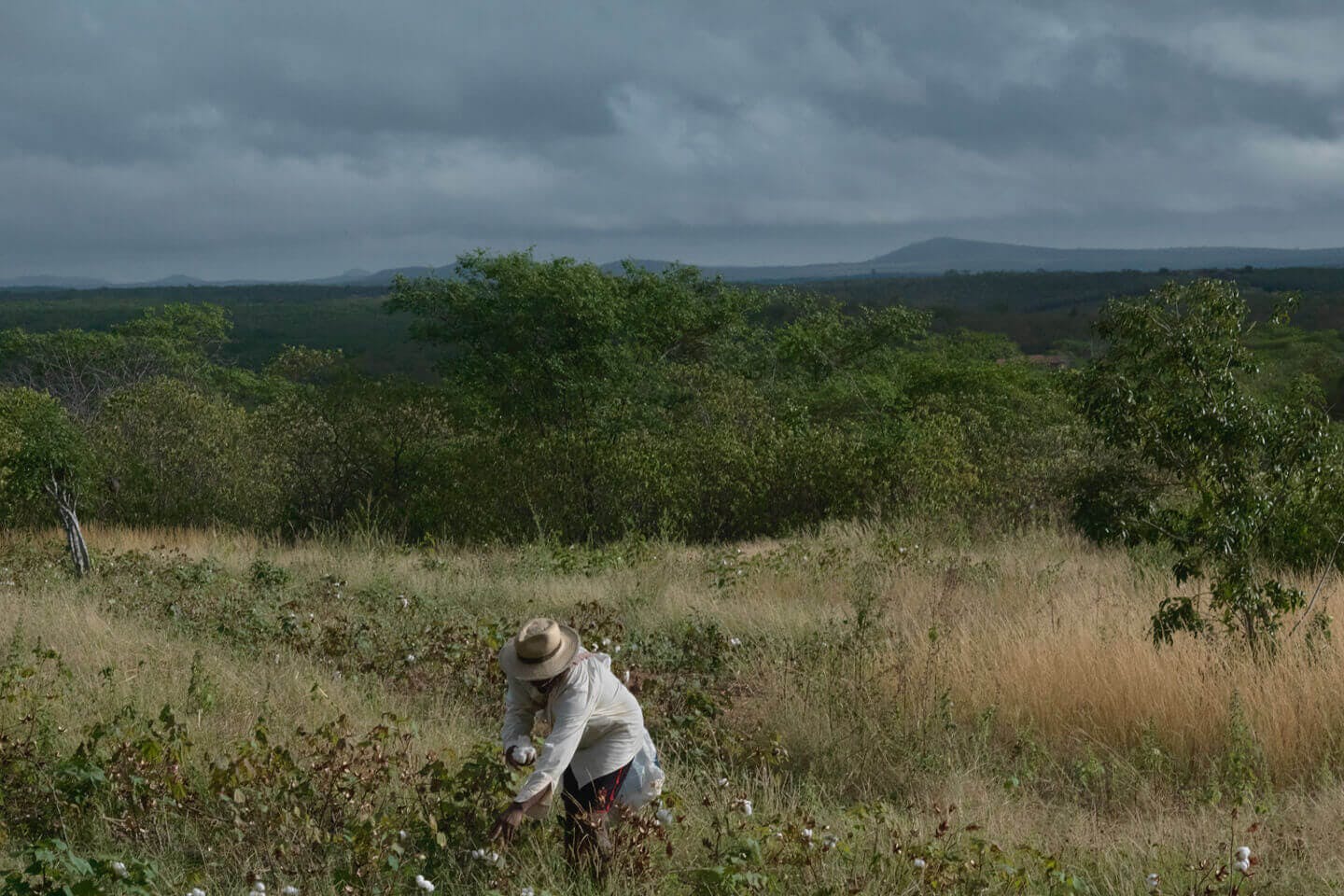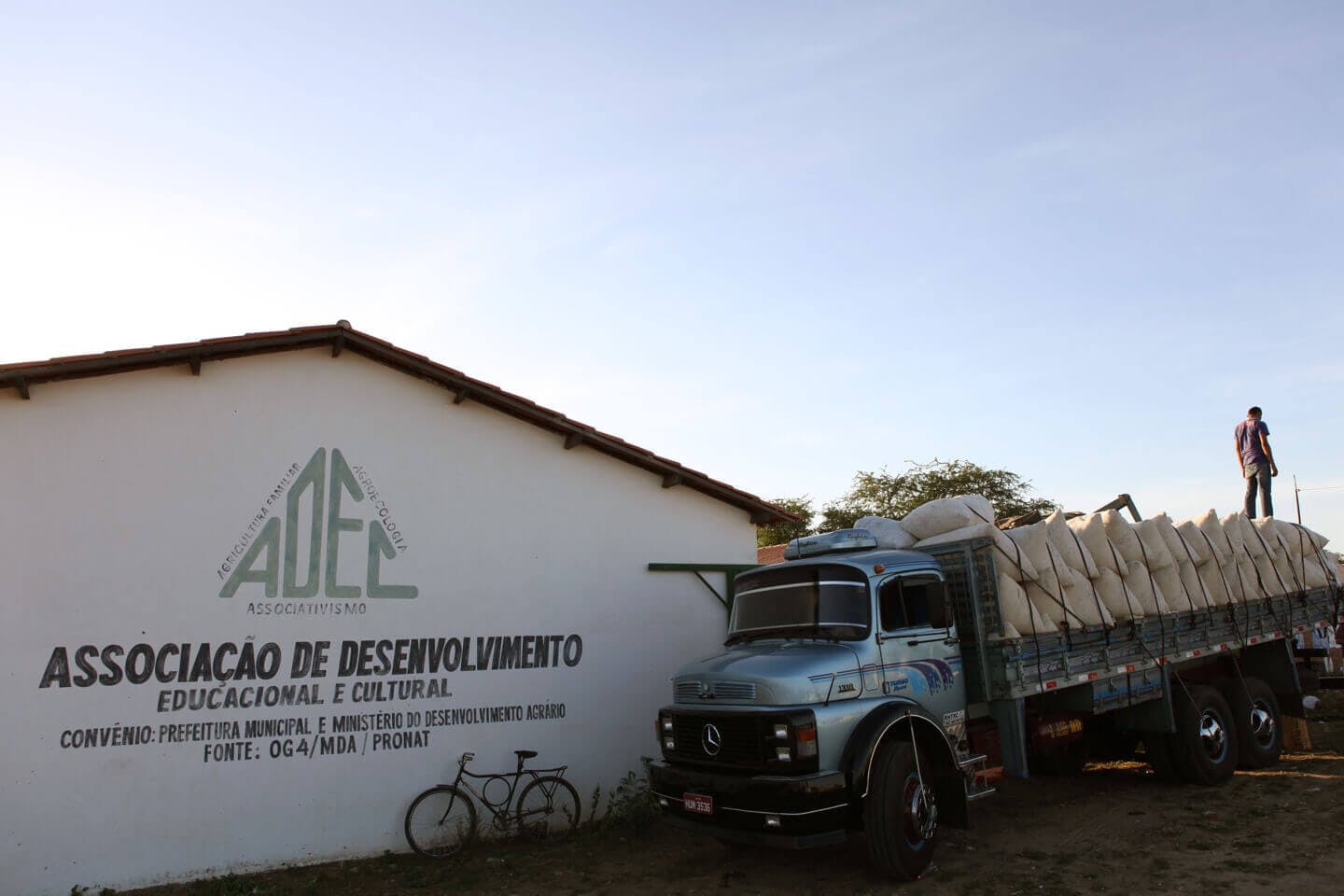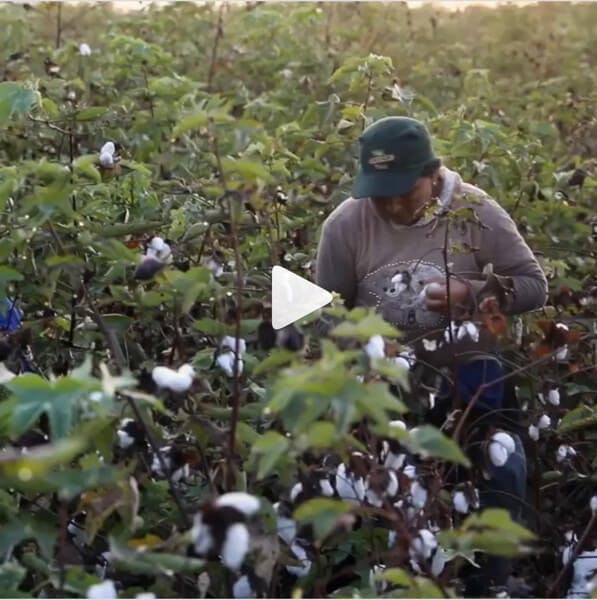
Cotton
Organic cotton, the raw material of the future?
The organic cotton we use at VEJA is grown by farmer's associations in Brazil and Peru who harvest it with respect for people and the environment.

© Studio VEJA
Since the launch of the VEJA project in 2004, we have bought nearly 1,843 tons of this sustainable cotton directly from producer associations located in various regions of Brazil and on the Peruvian coast.
More than 1,843 tons of organic and agroecological cotton since 2004
VEJA's organic cotton production

Droughts are frequent in Brazil. Between 2012 and 2017, the northeast of Brazil suffered the longest drought in its history. In the northeast of Brazil, there is a 60% chance of drought every season.
In 2021, we used 40% cotton from Brazil and 60% from Peru due to another drought.
In 2024, we purchased over 280 tons of cotton produced by 1,350 families in Brazil and Peru. VEJA pre-financed up to 50% of the harvest in advance.
It's been 21 years since VEJA has been directly purchasing organic cotton from farming families.
 tweet this quote
tweet this quote 
Organic cotton
2018
© Charlotte Lapalus
Organic cotton bought by VEJA
(kg per year)

Evolution of the organic cotton price
(R$/KG per year)

The price of cotton is mutually agreed upon in advance with the families. This ensures that ADEC farmers already know how much they will earn per kilo.
We establish a 2-year contract at the beginning of the year, ensuring to buy their cotton. Subsequently, we set the price of the cotton for that year at the beginning of each year.
This price covers the costs of agroecological cotton production and enables producers to earn a decent income.
VEJA provides 50% of the harvest in advance to support these communities.
Despite the COVID-19 pandemic, we have assured the families that we will purchase the entire harvest outlined in the contract.

Organic cotton stocked at ADEC
© Charlotte Lapalus
In 2022, VEJA paid R$20.77 per kilo of cotton, which is nearly 3.5 times more than the market price.
In 2021, we paid R$17.14 per kilo of cotton, and in 2020, we paid R$15.83 per kilo.
VEJA sets the price for organic cotton upfront with producers. We sign a two-year contract, ensuring we buy their organic cotton at a fixed price. This gives them certainty for the next 2 or 3 harvests and avoids uncertainty about selling their cotton.
The prices also include a premium for producers to implement more sustainable practices.
Organic cotton certifications
All cotton used by VEJA is certified.
Cotton produced in Peru is certified organic according to European and American standards in addition to GOTS certification.
The cotton produced in Brazil is part of the Brazilian participatory guarantee system: a government-approved method in which small producers certify each other.

Pedro Jorge
Esplar founder, agro-ecology pioneer in Brazil since the 1970s
© Cédric Amiot
VEJA works with NGOs that provide support to cotton producers.
ESPLAR is a Brazilian NGO founded in 1974 based in Fortaleza, Ceará State.
ESPLAR helps cotton farmers by giving them advice and support in the fields.
They introduced neem trees to protect cotton plants naturally. The oil from neem fruits keeps insects away from the cotton.
Diaconia is a Brazilian NGO founded in 1967. Diaconia works in several urban and rural areas to improve social and ecological conditions in the country.
They provide technical support to associations, visiting the farms and instructing them on prices and methods to grow organic cotton.

The cotton bought by VEJA is organic and agroecological, but the dyes used for the canvas are not.
However, VEJA uses conventional dyes that comply with safety regulations.
After processing, this cotton is used in the majority of VEJA styles.
For example, the canvas of our Nova-High style is made of 100% organic and agroecological cotton.

Peru

Organic cotton during harvest
Peru, 2018
© Arthur Wollenweber
Since 2017 we work with the farmers from Bergman Rivera located in the Chincha region, Peru.
Bergman Rivera was founded in 1986 as a pioneering company in organic agriculture. Today, they collaborate with over 150 families who cultivate organic cotton using water from the Andes mountains.
Chincha province provides cotton with a minimum environmental impact as it is handpicked and does not use any chemical fertilizers or toxic pesticides.
Cotton from Peru is GOTS certified, which guarantees its traceability. It is also certified organic according to American and European standards.
Why organic cotton?
VEJA uses fair trade organic cotton since most of the cotton produced every year worldwide comes from intensive monoculture crops.
Because of the heavy use of irrigation practices and massive quantities of pollutants, the environmental impact of this kind of industrial farming is disastrous.

Ceará landscape, 2016
© Ludovic Carème
What is regenerative agriculture?
Regenerative Agriculture aims to improve soil and natural landscapes using traditional methods. It enhances biodiversity, stores carbon in the soil, and optimizes the water cycle.
Similar to agroecology, these practices focus on preserving and enriching the soil, making it more fertile.
Agroecological cotton farming, unlike intensive methods, integrates with subsistence crops in the same field, avoiding chemical fertilizers or pesticides.
Cotton is grown alongside crops like corn, sesame, rice, beans, and pumpkins, providing various natural inputs to enrich the soil.
In Peru, farmers cultivate certified organic and regenerative cotton. They receive support in their certification process and benefit from technical and financial assistance to enhance their production.
In 2024, 10% of the organic cotton purchased by VEJA in Peru is Regenerative Organic Certified® cotton.
The ROC (Regenerative Organic Certified®) is a standard specific to cotton, aiming to promote regenerative agricultural practices while ensuring animal welfare and equity for workers, surpassing the requirements of traditional organic farming.

Maria Valdenira Rodrigues
VEJA agricultural engineer
2018
© Charlotte Lapalus

Maria Valdenira Rodrigues
and Sr Chiquinho, former ADEC treasurer
Ceará, 2016
© Studio VEJA
Maria Valdenira was born in a small village 180 km away from Fortaleza. The daughter of two farmers with limited means (her father could neither read nor write). She discovered agroecology when she was 27 during her agronomy studies.
In 2007, during the first organic cotton fair in the Northeast region of Brazil, she met Ghislain and Sébastien who one year later asked her to supervise the "organic cotton" certification of their cotton.
Today, Val has her own team that helps her support around 1,200 organic cotton farming families in Brazil and Peru.
Field diary
Ceará, 2016
This journal has been written by the cotton farmers themselves. In it, they write down their daily activity as well as the different multi-cropping systems they use to allow them to certify their cotton as organic and agroecological.

























